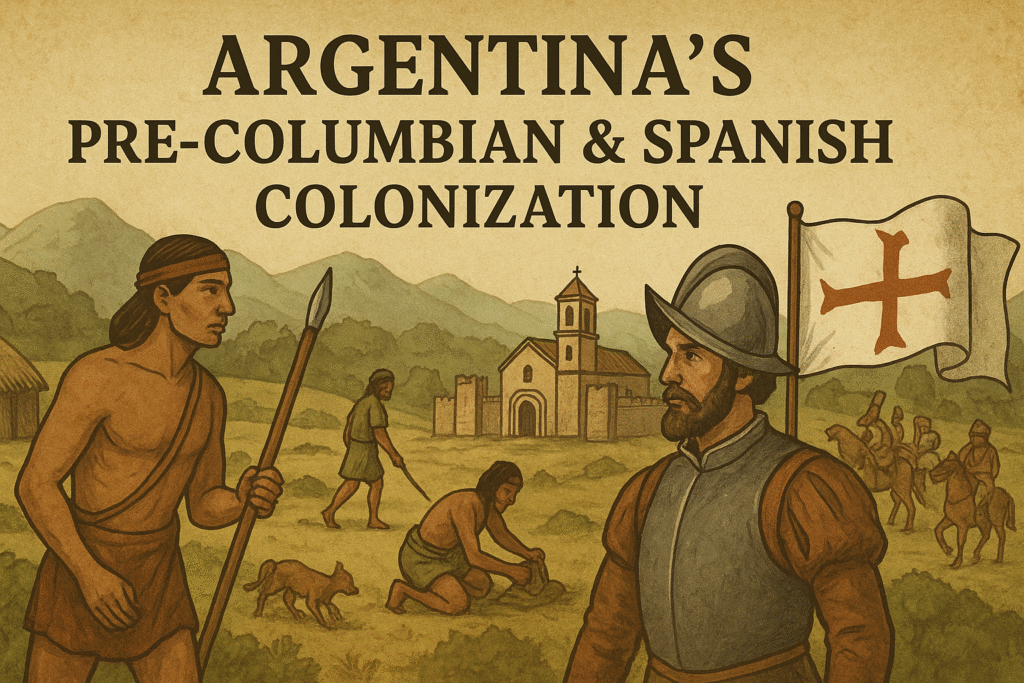People usually jump straight to the independence stuff when they talk about Argentina’s past. You know, like Juan Perón and Eva, or that messy Dirty War later on. But really, to get the full picture, you have to go way back. Before any Europeans showed up. And then the big changes from the Spanish taking over. All that early stuff basically built the base for what Argentina is today, culturally and socially, even economically.
Pre-Columbian Argentina. Diverse groups all over.
Long before the 1500s, when Europeans came in, Argentina had all these different Indigenous folks living there. It wasn’t like Peru with the huge Inca Empire, or Mexico and the Aztecs. No, nothing that centralized. Just a bunch of smaller groups, each one fitting into whatever the land threw at them, you know.
Up in the northwest, close to the Andes, there were the Diaguita and Calchaquí. They did farming, settled down with maize, potatoes, squash. Built communities around that, with irrigation setups and terraces on the hills. Pretty smart way to handle the mountains. Then in the northeast, the Guaraní were in the forests. They mixed farming with hunting, basically making do with what the woods gave them. Down in the Pampas and Patagonia, it was nomads like the Querandí and Tehuelche. They roamed the plains, hunted, fished, gathered plants. Moved around a lot, no staying put.
So yeah, all these ways of life made for a ton of variety among the Indigenous cultures. Different languages, rituals, art that didn’t look like anyone else’s. Some got touched by the Inca, especially in the northwest, when the empire pushed in late 1400s. Brought religion bits, roads, some admin stuff. But the Incas never really controlled the whole area that turned into Argentina.
How the Spanish showed up.
It started in 1516. Juan Díaz de Solís, Spanish explorer, hit the Río de la Plata. Bad end for him though. Local Indigenous groups killed him. Still, that trip got Spain interested more. Then 1536, Pedro de Mendoza tries setting up Buenos Aires as a base. Didn’t work out. Fights with the locals, not enough food. Settlers had to bail.
Spain looked elsewhere in South America for a bit. But they came back to the Río de la Plata. In 1580, Juan de Garay made another go at Buenos Aires. This one stuck. Mostly because of the spot, right on the Atlantic, good for a port.
What colonization did.
The Spanish really shook things up for those Indigenous societies. They brought tools, animals like horses and cows, new crops. But diseases too, smallpox hit hard, wiped out tons of people. Then the encomienda system. Basically, Spaniards got rights to pull labor and tribute from Indigenous communities. Forced farming or house work. Messed up social setups, populations dropped big time.
Catholicism came along with missionaries trying to convert everyone. Some Indigenous groups took it on, others pushed back, mixed it with their own spiritual stuff. Over the years, you start seeing this blend. Europeans, Indigenous, and later Africans mixing in the population. That’s where Argentina’s tricky cultural mix started forming.
Buenos Aires and other spots became part of the big Spanish setup. First under the Viceroyalty of Peru, then later the one for Río de la Plata. Spain kept trade tight at first, slowed things down. But the port there turned it into a key spot for business, especially cattle and hides.
What stuck from all that.
The early Indigenous and colonial times left real marks on Argentina. Traditions from the natives hung on, even if pushed down. In language, food, music, rituals. Strongest in the northwest and northeast. Spanish side shaped the main language, religion, buildings, how society worked.
The real thing here is all those layers. Argentina didn’t just come from Europe or straight from Indigenous ways. It was this hybrid, built from clashing, fighting, adapting. The Indigenous struggles, Spanish goals, cultures mixing. All that paved the way for the independence push and what the country’s identity became.


